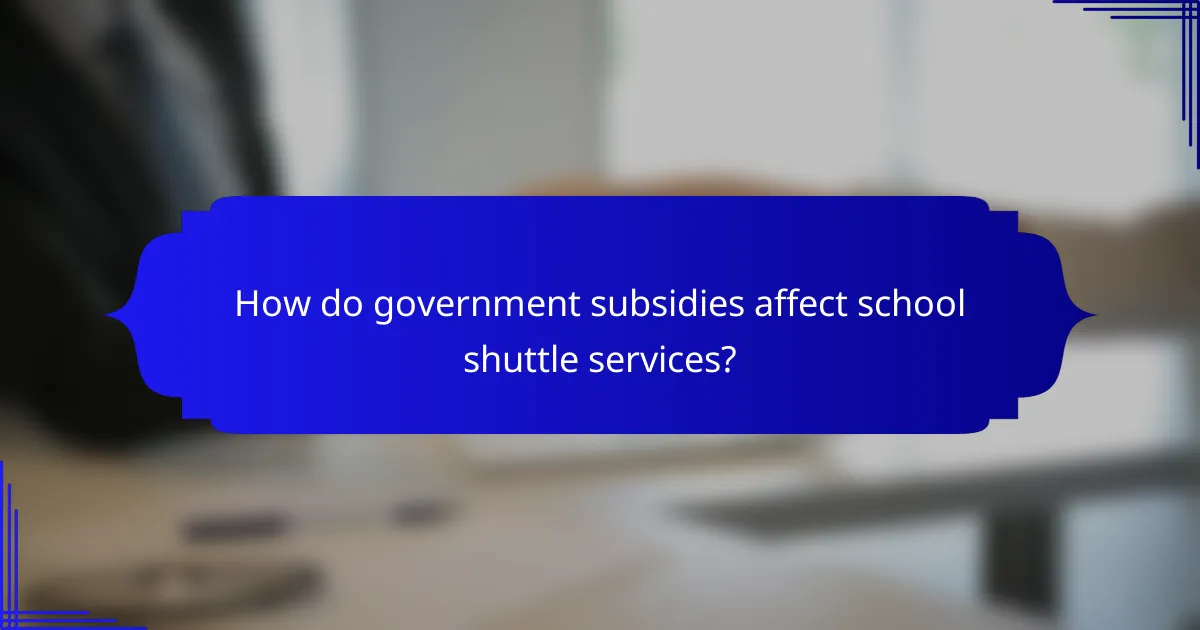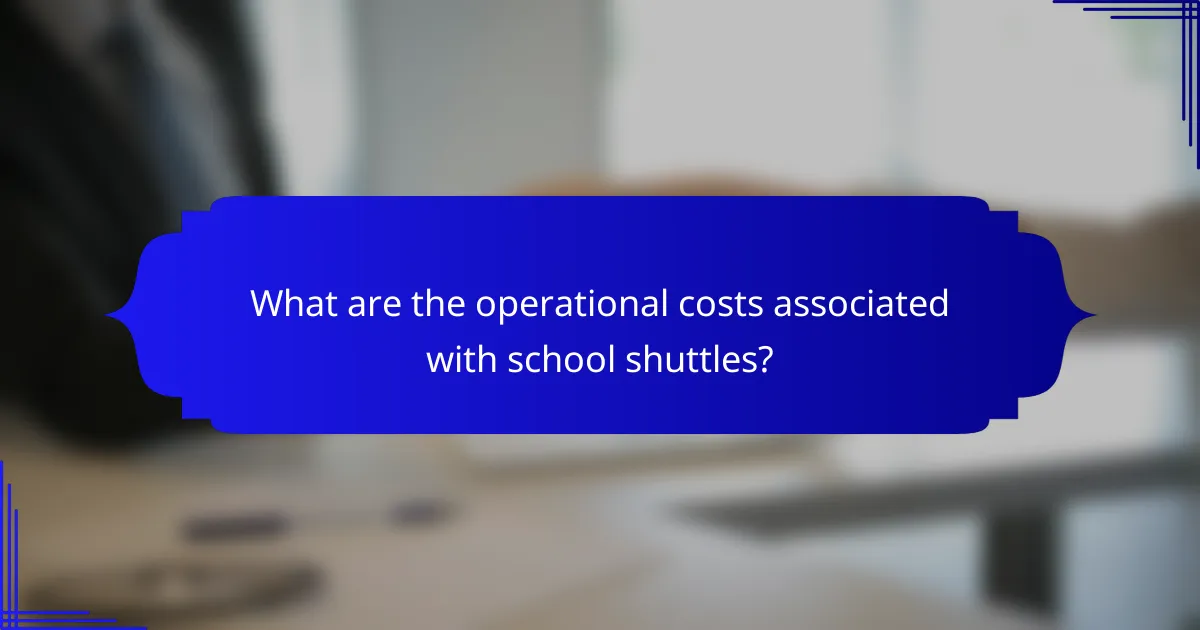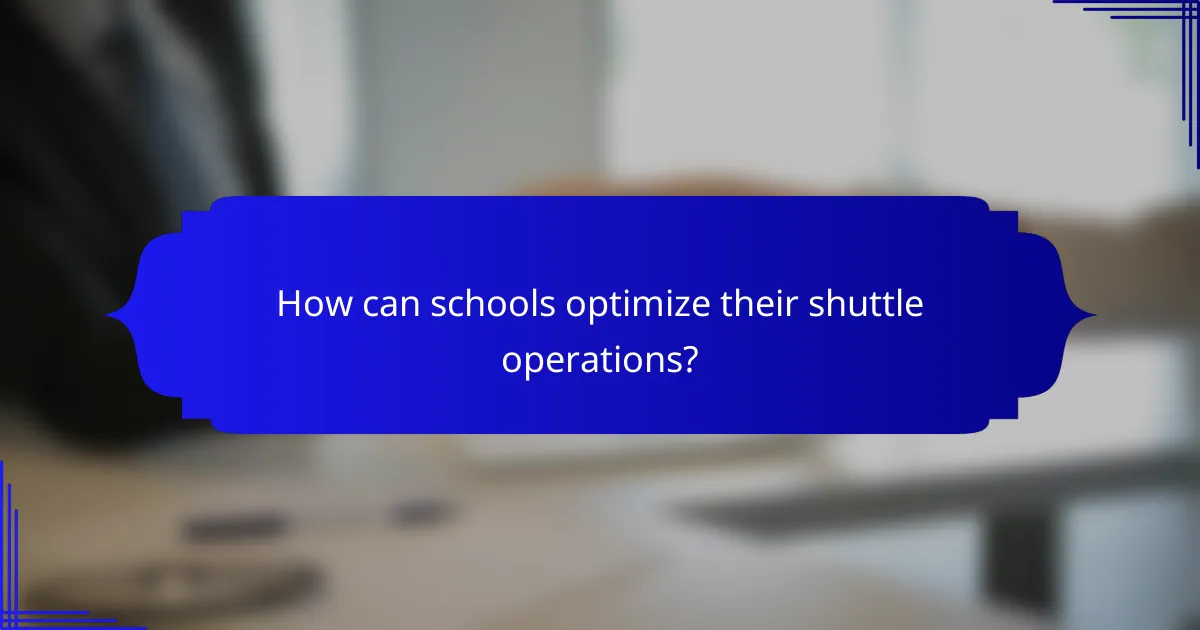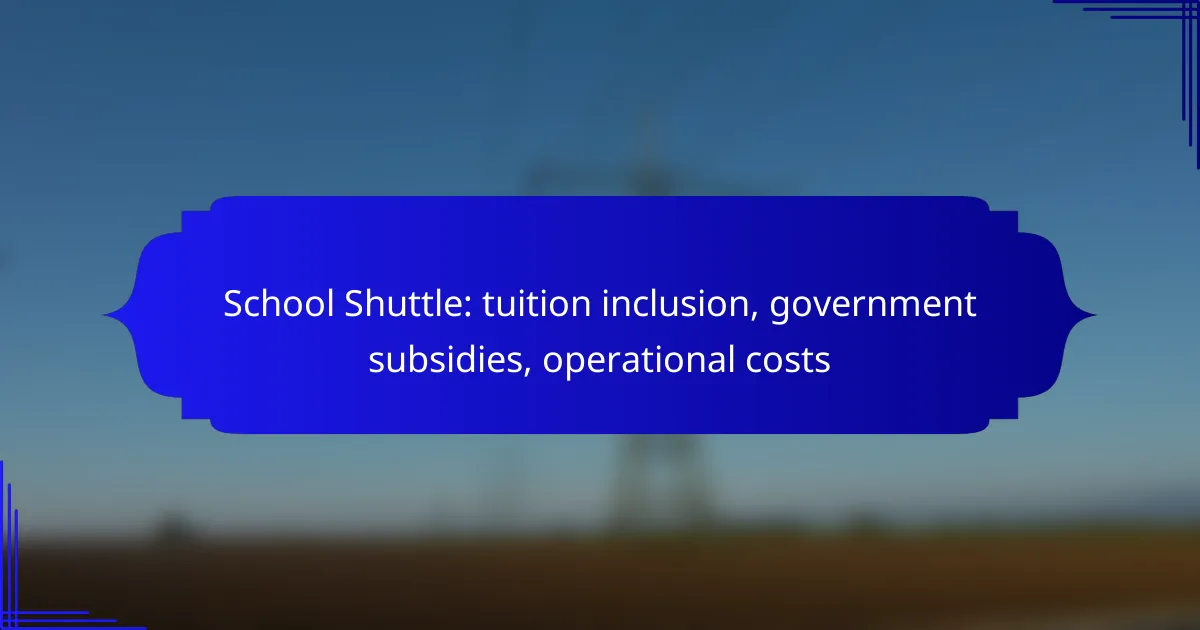School shuttle services play a vital role in facilitating student access to education, with policies on tuition inclusion differing between private and public institutions. While private schools may incorporate transportation costs into their tuition fees, public schools often rely on separate provisions, sometimes supported by government subsidies. These subsidies are essential for reducing operational costs, making transportation more affordable, and ensuring that students can rely on effective shuttle services.

What are the tuition inclusion policies for school shuttles in the UK?
In the UK, tuition inclusion policies for school shuttles vary significantly between private and public schools. Generally, private institutions may include transportation costs in their tuition fees, while public schools often have separate provisions for student transport, sometimes subsidized by the government.
Tuition coverage in private schools
Many private schools in the UK incorporate school shuttle services into their overall tuition fees. This means that parents may not have to pay additional costs for transportation, as it is bundled with other educational expenses. However, it’s essential to check individual school policies, as some may charge extra for extended transport services or specific routes.
For example, a private school might offer a flat tuition rate that includes daily shuttle services, while others may provide optional transport at an additional fee. Parents should inquire about these details during the enrollment process to avoid unexpected costs.
Public school transportation policies
Public schools typically have different transportation policies, often governed by local education authorities. In many cases, these schools provide free or subsidized transport for students living a certain distance from the school, usually over a specified threshold, such as two miles for primary and three miles for secondary students.
Parents should be aware that eligibility for free transport can depend on various factors, including the child’s age and the school’s location. It’s advisable to consult the local council’s guidelines to understand the specific provisions and any potential costs involved.
Regional variations in tuition inclusion
Tuition inclusion policies for school shuttles can vary widely across different regions in the UK. In urban areas, where public transport is more accessible, schools may have less comprehensive shuttle services compared to rural areas, where transport options are limited.
For instance, some regions may offer extensive shuttle networks funded by local authorities, while others might rely on parents to arrange transport. It’s crucial for families to research local policies and available services to ensure they understand the options and any associated costs in their area.

How do government subsidies affect school shuttle services?
Government subsidies play a crucial role in enhancing school shuttle services by reducing operational costs and making transportation more affordable for families. These financial aids can lower tuition fees and improve service quality, ensuring that students have reliable access to education.
Types of government subsidies available
There are several types of government subsidies that can benefit school shuttle services, including direct funding, tax credits, and grants. Direct funding often comes from local or state education budgets, while tax credits can incentivize schools to invest in transportation infrastructure. Grants may be available for specific projects, such as eco-friendly shuttle initiatives.
Additionally, some regions offer subsidies specifically for low-income families, helping to cover transportation costs. These programs aim to ensure equitable access to education by alleviating financial burdens on families.
Impact of subsidies on operational costs
Subsidies significantly reduce operational costs for school shuttle services, allowing schools to allocate funds to other essential areas. With lower expenses, schools can enhance service quality, such as maintaining vehicles and hiring qualified drivers. This can lead to improved safety and reliability for students.
For example, a school that receives a subsidy may reduce its shuttle fees by a notable percentage, making it more affordable for families. This can also encourage higher participation in school programs, as transportation becomes less of a barrier.
Eligibility criteria for schools
Eligibility for government subsidies often depends on factors such as the school’s location, student demographics, and financial need. Public schools typically have a higher chance of qualifying for these funds compared to private institutions. Additionally, schools must demonstrate a commitment to improving transportation services to receive support.
Schools may need to submit applications detailing their transportation plans and how subsidies will be utilized. It’s essential for administrators to stay informed about local and state regulations regarding funding opportunities to maximize their chances of receiving aid.

What are the operational costs associated with school shuttles?
The operational costs of school shuttles encompass various expenses necessary for their effective functioning. Key factors include fuel, maintenance, driver compensation, insurance, and liability considerations, all of which contribute to the overall budget for school transportation services.
Fuel and maintenance expenses
Fuel costs are a significant part of operational expenses for school shuttles, often fluctuating based on market prices. Schools should budget for fuel consumption based on the distance traveled and the number of trips made weekly.
Maintenance expenses include regular servicing, repairs, and parts replacement to ensure safety and compliance with regulations. Setting aside a percentage of the total budget for maintenance can help manage these costs effectively.
Driver salaries and training costs
Driver salaries represent a major operational cost, influenced by factors such as experience, location, and local wage standards. Schools should consider competitive salaries to attract qualified drivers while remaining within budget constraints.
Training costs are essential for ensuring drivers are well-prepared for their roles, including safety protocols and emergency procedures. Investing in comprehensive training can reduce liability risks and improve service quality.
Insurance and liability considerations
Insurance is a critical component of operational costs, covering liability, vehicle damage, and injury claims. Schools must comply with local regulations regarding minimum insurance coverage, which can vary widely by region.
Liability considerations also extend to ensuring that safety measures are in place, such as regular vehicle inspections and driver background checks. Proper risk management can help minimize insurance premiums and protect against potential claims.

What factors influence the pricing of school shuttle services?
The pricing of school shuttle services is influenced by several key factors, including distance and route complexity, the number of students served, and service frequency and scheduling. Understanding these elements can help parents and schools make informed decisions about transportation options.
Distance and route complexity
Distance and route complexity significantly impact the cost of school shuttle services. Longer distances typically result in higher operational costs due to fuel consumption and time spent on the road. Additionally, routes with multiple stops or intricate navigation can increase the time and resources required for service.
For example, a shuttle service covering a 10-kilometer route with several stops may cost more than one covering a straight 5-kilometer journey. Schools should evaluate the efficiency of routes to optimize costs while ensuring student safety and convenience.
Number of students served
The number of students using the shuttle service directly affects pricing. Higher enrollment can lead to lower per-student costs, as fixed operational expenses are distributed among more riders. Conversely, a service catering to a small number of students may charge higher fees to cover the same costs.
Schools can consider group discounts or tiered pricing models to encourage more families to use the shuttle service, thereby increasing ridership and reducing individual costs.
Service frequency and scheduling
Service frequency and scheduling play a crucial role in determining shuttle pricing. More frequent services require additional vehicles and drivers, which can raise operational costs. Schools must balance the need for convenient schedules with the associated expenses.
For instance, a shuttle running every 15 minutes may be more expensive than one operating every 30 minutes. Parents should assess their needs and preferences when selecting a service, as less frequent options may offer cost savings while still meeting essential transportation requirements.

What are the prerequisites for implementing a school shuttle program?
Implementing a school shuttle program requires careful planning and consideration of various factors, including community needs, partnerships, and funding sources. Understanding these prerequisites helps ensure the program is effective and sustainable.
Community demand assessment
Assessing community demand is crucial before launching a school shuttle program. This involves gathering input from parents, students, and local residents to determine the need for transportation services. Surveys or community meetings can help identify how many families would utilize the shuttle and their preferred routes and schedules.
Consider conducting a pilot program or trial period to gauge interest and gather feedback. This can provide valuable insights into operational adjustments needed to meet community expectations effectively.
Partnerships with local authorities
Establishing partnerships with local authorities is essential for the successful implementation of a school shuttle program. Collaborating with city officials can facilitate access to necessary resources, funding, and regulatory support. Local governments may also offer subsidies or grants to help offset operational costs.
Engaging with transportation agencies can enhance service efficiency and safety. Ensure that all partnerships are formalized through agreements that outline responsibilities, funding, and operational guidelines to avoid misunderstandings later on.

How can schools optimize their shuttle operations?
Schools can optimize their shuttle operations by leveraging technology, streamlining routes, and managing costs effectively. This approach not only enhances efficiency but also improves student safety and satisfaction.
Utilizing technology for route planning
Technology plays a crucial role in optimizing shuttle routes. Schools can use GPS tracking and route optimization software to analyze traffic patterns and adjust schedules accordingly. This can lead to reduced travel times and improved fuel efficiency.
Implementing mobile applications for parents and students can also enhance communication regarding shuttle timings and delays. Real-time updates can help families plan better and reduce anxiety about shuttle arrivals.
When selecting technology solutions, consider user-friendly interfaces and integration capabilities with existing systems. Schools should evaluate multiple options and choose those that offer the best balance of functionality and cost-effectiveness.
